DO-IT News December 2010

Volume 18, Number 2
Below are the articles of the DO-IT News December 2010 newsletter. These articles can also be seen all on one page at the Full Newsletter option.
Director's Digressions
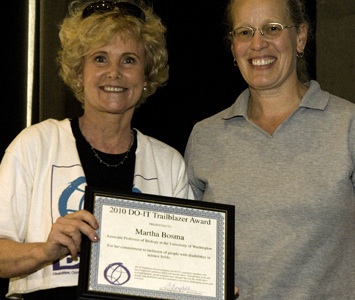
DO-IT Trailblazer awards highlight DO-IT community members who forge new pathways that will benefit others. We select individuals who, through their work and accomplishments, have changed the way the world views people with disabilities and have increased their potential to succeed in college, careers, and community life. Congratulations to this year's honorees!
Martha Bosma, Associate Professor of Biology at the University of Washington (UW), for her leadership in the inclusion of people with disabilities in science education and careers, outreach to ensure accessible science labs, and mentoring of DO-IT participants.
Corinna (Lang) Fale, DO-IT Ambassador and '00 Scholar, for promoting self-advocacy for people with disabilities at the Arc of Snohomish County and as a representative for People First of Washington.
Professor Sang-Mook Lee, Professor of Geophysics at Seoul National University, for promoting access to technology, education, and employment for people with disabilities in South Korea.
Noah Seidel, DO-IT Ambassador, '05 Scholar, his disability advocacy at the UW and in the Seattle community.
Priscilla Wong, DO-IT Ambassador and '95 Scholar, for her volunteer work serving people with disabilities at the Ronald McDonald House and Seattle Children's Hospital and advocacy for accessible programs and environments.
Goodbye, Maryann
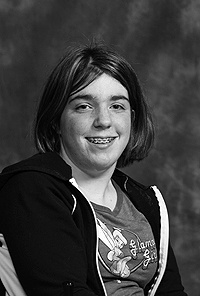
Maryann graduated from Shoreline Community College and was accepted to the UW Seattle, where she planned to begin classes this fall. Maryann was interested in studying social work and law, especially disability law. She was involved with the Arc of Snohomish County and Disability Rights Washington.
Maryann was also an athlete who competed in the Special Olympics in volleyball, bowling, basketball, track-and-field, and swimming.
DO-IT Awarded Grant Funds
I am thrilled to report the receipt of $3,750,000 from the National Science Foundation (NSF) to expand our efforts along with the UW Computer Science & Engineering department to promote the success of people with disabilities nationwide (grant #CNS-1042260). See www.washington.edu/accesscomputing/ for details. DO-IT has also received $200,000 from NSF (grant #HRD-0929006) to lead collaborative dissemination efforts of other projects funded by NSF that support people with disabilities. See www.washington.edu/doit/programs/RDE for further information.
Summer Study: What Do Phase I Scholars Do?
DO-IT Phase I Scholars participate in a two-week, live-in Summer Study session on the UW Seattle campus. They learn about college life; explore the Internet; interact with peers, staff, and mentors; and have fun. The DO-IT Scholars program started in 1993 as an experimental project for teens with disabilities nationwide. It is currently open to Washington State teens and is supported by the State of Washington, the Boeing Company, the Microsoft Corporation, and the National Oceanic and Atmospheric Administration.
"Ladies and Gentleman...The Beatles!"
One of the evening events during Summer Study was a trip to the Seattle Laser Dome to see the Beatles show. A laser show projects multi-colored lights onto a ceiling in abstract shapes and defined figures, such as trees, owls, and people in rhythm with the music.
Inside the laser dome there was a sloped area between the outer sections of seats near the front so that people could lie on the ground to view the show. This provided enough room for a few wheelchairs, but it would have been beneficial to have more wheelchair seating. The show should also consider increasing the bass volume for people who are hard of hearing or deaf, so that they can feel the music. With these improvements, more people would enjoy this awesome experience.
Woodland Park Zoo: Accommodating Habitats
Visiting the zoo was a fun way to learn about animals from all over the world. From well-known lions and giraffes, to more exotic animals like Komodo dragons, there is something for everyone. It was fascinating watching the animals and fun spending time with new friends.
For a person with low vision, accessibility at the zoo is quite good. The zoo uses a large typeface on information cards, making the text easy to read. The wide walkways and ramps and spacious restrooms ensure that people using wheelchairs can easily maneuver. Railings throughout the park are at a good height so that visitors in wheelchairs can clearly view the exhibits. The zoo could increase accessibility to people who are hard of hearing by having captioned videos. Captioning would also help hearing people as well, since certain exhibits can be loud.
In our opinion, the zoo was the best field trip of Summer Study! We learned about animals and we also learned from each other?how to adjust to different environments and make accommodations that work best for each situation.
Outdoors for All?
The Outdoors for All event at Summer Study gave Scholars the opportunity to ride accessible bikes. For people without a physical disability, riding the bikes was fun and there weren't any accessibility issues. For most Scholars with a mobility impairment, the bikes were accessible. For example, one bike at the event was propelled by the biker's arms, instead his or her legs. Scholars who have a visual impairment pedaled on a two-person bike, while a sighted Scholar steered. One Scholar, who has muscular dystrophy, found the bikes to be inaccessible because he requires trunk supports as well as a custom seat to sit comfortably. Additionally, he does not have the strength to pedal with his arms or his legs. To make this experience more accessible, we recommend a lift to transfer a person with a mobility impairment from his or her wheelchair to the bike, as well as a passenger seat with stationary foot rests.
IMAX Accessibility
On Saturday, July 24, Scholars went to the IMAX theater at the Pacific Science Center to watch the documentary Hubble 3D, about NASA's Hubble telescope and the breakthroughs it made in space-related science. There were some accessibility problems concerning the IMAX building and movie.
For people using wheelchairs, the theater had an acceptable amount of wheelchair space for the public but, of course, not enough for all the wheelchairs in the DO-IT group. Four Scholars transferred from their wheelchairs to theater chairs, which is a task that, ideally, would not be necessary to perform.
For one of the Scholars, who is deaf, the movie was just a bunch of pretty pictures since the film didn't have captions. For people who are blind, the film was accessible because most images were clearly described verbally. This feature aided Scholars with learning disabilities as well.
Even though watching the movie was a pleasurable experience for most Scholars, the route to and from the theater was not easily accessible for people with physical disabilities. For example, there was a long, winding ramp for wheelchairs at the top of the theater. There was not a sign instructing viewers that walking down the ramp brought you, inconveniently for most, to the bottom of the theater. At the end of the film, the usher instructed us to exit the theater using the long and steep stairs on both sides of the seats?not a route accessible for people with mobility impairments.
After the movie, a Scholar had to use the restroom. When she went to wash her hands, she noticed that one of the sinks was conveniently lower than the other two. However, she couldn't use the mirror because all three mirrors were the same inaccessible height. She wondered, "Why lower a sink but not a mirror with it?"
In conclusion, the IMAX movie experience was thrilling. There were some accessibility challenges that would be simple to fix. We hope the contractors, designers, and managers of the IMAX decide to make a few changes to the theater to accommodate everyone. We recommend adding captions to videos, making directions to wheelchair locations and routes clear, lowering mirrors in the restrooms, and training all staff to assist participants with disabilities.
Pacific Science Center
The Summer Study Pacific Science Center field trip was a lot of fun. The center had elevators and power-operated doors, which made the building accessible. Additionally, most of the exhibits were low enough so that everyone, including people in wheelchairs, could see. However, certain railings were too high and blocked the line of sight for some visitors. For a person with a vision impairment, the experience wasn't very accessible. To increase accessibility, we recommend that the center install large print and Braille signs explaining the exhibits. Scholars who were blind could not see the exhibit, so having an explanation of each feature would be more inclusive.
Burke Museum
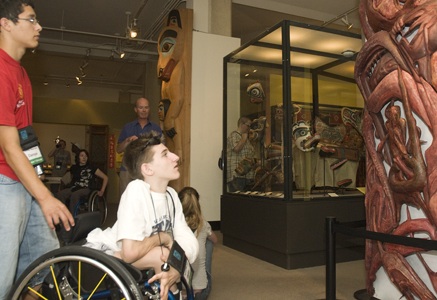
Going to the Burke Museum at the UW Seattle was a fun and educational experience; however, there were some accessibility issues we encountered. For example, the museum did not provide a large print version of the information displayed near its exhibits to aid people with visual impairments. As one Scholar stated, "The Burke Museum was accessible to me. It wasn't that accessible for my friend Nicco, though, because he has poor vision." Additionally, the floor plan of the museum was extremely difficult for wheelchair users to maneuver through. The only way for someone using a wheelchair to get to another floor was to use an old freight elevator at the very end of the museum and the route to the elevator was not marked. We recommend that the museum provide large print text for its displays and clearly mark the path to the elevator.
Karaoke Night
Karaoke night takes place every Summer Study on Saturday night. While eating your custom-made ice cream sundae, you can listen to your friends sing and pick out the song you want sing next. It wasn't a completely accessible event, though. Scholars with dyslexia had difficulty reading all of the words on the screen while singing. Additionally, those who were blind could not read the book of songs and weren't able to see the words on the screen. Some Scholars who have mobility impairments had difficulty holding the microphones, but they had plenty of friends to help.
Microsoft Field Trip
One of the trips during Summer Study was a visit to Microsoft. We toured the facilities and met with employees Loren and Jason. We also got a chance to design a robot dog. Loren helped us with the design and we came up with a lot of great ideas and even some crazy ones, including a pepper spray defense mode.
Overall, the Microsoft campus was accessible. One Scholar, who uses a wheelchair, said it was easy for him to navigate the wide hallways. Another Scholar, who also uses a wheelchair, said that it was hard to roll and turn on the carpet. To make Microsoft more accessible, we recommend that they replace the carpet with cement in places that have heavy wheelchair traffic and create wider aisles in the store for people with wheelchairs to navigate easier. For people with visual impairments, it would be helpful if the glass railing was more visible.
Summer Study: What Do Phase II Scholars Do?
Phase II Scholars return to the UW Seattle campus for their second Summer Study. They meet the Phase I Scholars, learn about college life and career preparation, and participate in a one-week workshop with postsecondary instructors.
A Climate of Change
Phase II Scholars Louis, Abby, Josh, Leo, and Ryan participated in the workshop "A Climate of Change." This workshop was presented by staff and scientists associated with the National Oceanic and Atmospheric Administration (NOAA) and was coordinated by Julie Peddy. In this workshop, the Scholars learned how climate change is affecting different parts of the world. They watched video clips, listened to speakers, and conducted experiments.
Dr. Stephanie Moore of Northwest Fisheries Science Center kicked off the week of learning with an introduction to climate change and variability. Dr. Christopher Sabine, an oceanographer, talked about ocean acidification and described how and why the oceans are becoming more acidic. Scholars learned how salmon runs are being affected by climate change and human actions. Dr. Mark Scheurell told us how the dams being built along the Columbia and Snake Rivers are affecting salmon runs. El-Nino predictions were also presented by the Science and Operations Officer for the National Weather Service, Kirby Cook. Rounding out the week was a discussion led by Dr. Jameal Samhouri of Northwest Fisheries Science Center regarding the effect of climate change on fisheries.
Germ Forensics
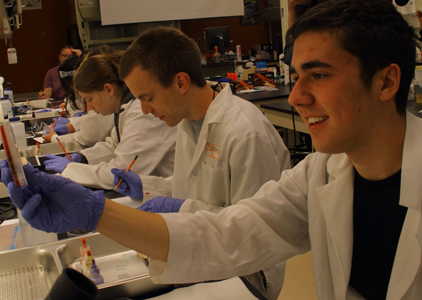
"This is the best workshop of Summer Study," said Teryn Allen and Theresa Britschgi of Seattle Biomedical Research Center at the kick-off the Germ Forensics workshop. As Interns, we had the opportunity to participate in this super amazing class along with Phase II Scholars Allegra, Shelby, Anna, Chris, Alex, and Reese.
We started off the week testing our own bacterial flora using samples from our armpits, toes, eyelashes, and even beards. We then cultured the sampled bacteria on agar plates and made slides, so we could view the bacteria under a microscope.
Then we learned about the HIV virus in the HIV Testing and Epidemiology of Transmission lab. We learned that the HIV virus tends to replicate rapidly in infected people's blood, and in response to this, patients will start making HIV-specific antibodies and T cells. The presence of HIV-specific antibodies in the blood can be tested using a biochemical technique.
To conduct our own HIV test, we went back to the lab. One of the tools we used was a micropipette. This tool dispenses liquid in the range of microliters. For some of us it was the first time working with micropipettes, so we practiced for a while before we did an actual lab test. To conduct the test we coated the bottom of a well plate with an HIV protein. Patient serum was then added to each well, and, if HIV-specific antibodies were present, they would bind to the HIV protein.
In addition to learning about bacteria and HIV testing, we learned about malaria, how to test for bacteria-killing agents, and tuberculosis. Thank you to Teryn and Theresa for teaching us more about bacteria and germs. You were right, it WAS the best workshop of Summer Study!
Obama Appoints Karen Braitmayer to U.S. Access Board
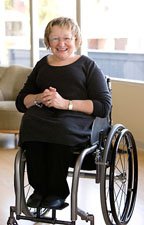
Congratulations to DO-IT and AccessSTEM Mentor Karen Braitmayer for her recent appointment to the US Access Board by President Obama. The Board is an independent Federal agency that provides leadership in accessible design under the Americans with Disabilities Act (ADA) and other laws.
Braitmayer commented, "I am very honored to have been selected, and I hope I can do a great job." Braitmayer is a registered architect and principal with Studio Pacifica, an architectural consulting firm focused on accessibility and accessible design. She regularly advises state agencies, local governments, school districts, other architects, and home builders and owners on accessibility under various laws, including the ADA and the Fair Housing Act, and on compliance with state codes in housing, commercial, retail, institutional, and educational projects. For more information about the Access Board and its membership, consult www.access-board.gov.
Exploratory Neurobiology: Bugs, Mice, and Brains!
Exciting discoveries are underway in the field of neurobiology. With the aid of mouse brains and cockroach legs, DO-IT Phase II Scholars Bilal, Joey, Kristin, Sean, and Vanessa learned how the brain functions. The lab of Dr. Martha "Marti" Bosma uses the hindbrain of an eleven-day-old mouse embryo to measure the effects of various chemicals on the developing brain, in particular exposure to antidepressants. The results were amazing to watch. At this age, the chemical serotonin has just started production. Serotonin allows connections to be created in the nervous system. The creation of new pathways is a random activity that is measured in the lab as a control. When serotonin-inhibiting medications are introduced (such as antidepressants), the activity becomes more sporadic and intense, suggesting that neurons are being developed incorrectly and some pathways may not even be allowed to develop. Applying this lab knowledge to a real-world scenario, these results suggest that a woman who is pregnant and on antidepressants may cause the fetus to have abnormal development of neurons. Applying lab learning to the real world was very interesting.
In a different lab, with the help of doctoral students Stephanie Furrer and Hiro Watari, the Scholars listened to the sounds of legs. Cockroach legs that is. The nervous system of insects is very different from the nervous system in mammals, and the legs of a cockroach have an almost independent nervous system. By listening to a magnified, neurologically induced signal and recording it, adaptations in the nervous system can be studied. These adaptations allow the animal to prioritize signals sent to the brain. For example, when you put on a new shirt, your skin is very aware of the new material. To prevent an overload of information to the brain the intensity of the signal fades exponentially until the sensation is almost absent. This is beneficial because nonessential signals are filtered out so more urgent signals can get through. By understanding these neuro-pathways, we may someday be able to identify and fix damage in the brain and create medication that doesn't negatively impact the developing brain.
Ambassador Profile: Anthony Arnold
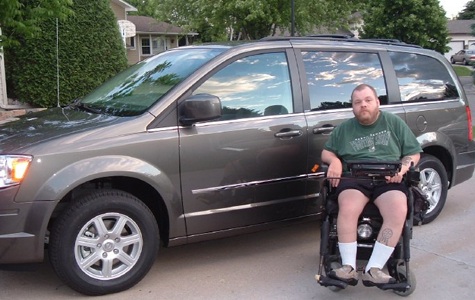
Hi, I'm Anthony Arnold, a DO-IT Ambassador and '94 Scholar from Grand Forks, North Dakota. DO-IT helped shape my interest in technology, especially assistive technology applications designed for people with disabilities.
Before I became a DO-IT Scholar, I used a communication device by the Prentke Romich Company (PRC). It gave me a lot of independence. Combined with my experience at DO-IT, this technology fueled my interest to work at PRC or a similar company that develops and supports augmentative and alternative communication systems.
I first connected with founder of PRC, Barry Romich, thanks to one of the DO-IT Mentors. Barry and I communicated over email for a couple of years before a remote troubleshooter position in the technical service department became available. I decided to apply, got the job, and worked in technical service for seven years before a position in research and development (R&D) was open. I have worked in R&D for nearly two years, where I'm primarily responsible for testing current and future products. One of the newest products I worked on allows the user to have cell phone features directly on their communication device.
Away from PRC, I am a guest lecturer at universities about augmentative and alternative communication. I share my experiences, what PRC is currently working on, and where we are headed in the future. I have also presented at various conferences.
Recently, I participated in the writing of the book Transition Strategies for Adolescents and Young Adults Who Use Augmentative and Alternative Communication, by David McNaughton and David Beukelman. I met David McNaughton through my work at PRC, and we have partnered on various projects concerning education, independent living, and employment opportunities for augmentative and alternative communicators.
Regarding your career, I just want to say that you can do it too if you feel passionately. Always be open to learn something new; I learn something new each day at PRC.
Creating a Successful Healthcare Transition
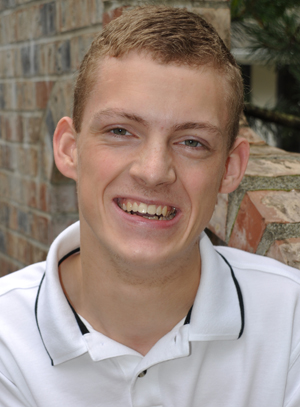
Hi, my name is Daman Wandke, and I am a junior at Western Washington University (WWU). I have cerebral palsy. Thanks to my parents' hard work and dedication, they made sure that I got the right physical and speech therapy. My parents also taught me how to be an advocate at a young age. In my transition to college, I learned about managing my own healthcare.
In high school, I became increasingly involved in my medical appointments. My parents still went to all of my doctor appointments, but I began to be the one to ask the questions. This helped me understand decisions that were made to aid my care and prepare for my freshman year of college.
In freshman year, my back started to hurt more than normal, and I knew something was wrong. I was in so much pain that it was hard to get out of bed. After several failed attempts to get an x-ray of my back at the school clinic, I decided to go to the emergency room and they agreed to take the x-rays. After looking at the results the doctor said, "Congratulations, you successfully broke your back." I asked if he was joking and he said, "No." My next step was to figure out a plan.
After visiting my orthopedic surgeon, I learned that I didn't need surgery and would just need to take pain medication until my back healed on its own. A few months after I broke my back, I decided it was time to go back to physical therapy to keep my body healthy. I have been going to physical therapy for two years since I hurt my back and have been managing the pain without much help from others.
Through this experience, I learned to be proactive and in charge of my own care. I also learned how to manage a schedule for both my medication and personal care assistants.
We all have abilities and disabilities (or strengths and weaknesses). Try to find ways to accommodate your disabilities with your abilities.
Tips for Teens: Managing Your Healthcare
- Write down your questions before you go to your appointment.
- Ask for clarification if you don't understand what your doctor is saying.
- Know what your medications are, what doses you take, and on what schedule.
- Remember to take your medications.
- Track your symptoms—when you are in pain and where—so that you can share this information with your doctor.
Tips for Parents: Youth Healthcare Transition
- Encourage medical providers to ask your teen questions before asking you. This will help your teen get used to answering questions. Even if they are unable to answer, it will engage your teen in the discussion.
- Ask your teen questions about his or her medical appointments to stay involved.
- Encourage your teen to ask you for help or advice when they need it.
- Enable your teen to take responsibility for his or her health.
Quick Scholarship Tips
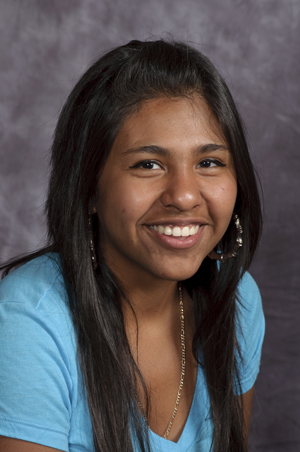
I received scholarships to attend the University of Washington, and it was well worth the effort. You can do it too, and here's how.
- Start a scholarship binder. The best time to start searching for scholarships is in your sophomore or junior year of high school. Begin by searching for information at scholarship websites and your school counselor's scholarship office. Collect copies of information about all of the scholarships you plan to apply for in your own binder. When your senior year arrives you won't have to spend time searching for scholarships, because you'll be too busy applying for them! Just remember to search for and use the updated version of the application when you apply.
- Apply for everything. Even if you think you don't have a chance at getting it, apply anyway. Don't underestimate yourself.
- Finish your applications. Follow the directions. Make sure you send in everything the application asks. The scholarship committees are not going to pick someone who only completes half of the application.
- Meet the deadlines. Organize the scholarships in your binder by date and follow those dates. I don't know of any scholarship organizations that take late applications.
- Stay motivated. It might seem like the applications are endless and time-consuming, but, trust me, when you have some or even most of your college education paid for, you're not going to regret having spent hours on scholarship applications. You can either work now and get that scholarship money, or work later paying off all of the loans you had to take out.
- Tell your story. When the application asks you to write an essay about your life, struggles, goals, or anything else, make sure you tell them who you are. The scholarship committee wants to get to know you, but it is up to you to decide how much of your story you tell.
- Get good recommendation letters. Pick teachers, community members, and employers who know you fairly well. You need to have at least two spectacular recommendation letters. Give them enough time to write the best letter they can. They also might be writing letters for other students, so it would be good to get first dibs.
- Edit. Teachers are here to help you, so ask them. Do not send in your applications without having someone else proofread your essays and responses. Other people will catch mistakes that you will miss.
Organize a Disability Awareness Event on Your Campus
When you plan a disability event on a college or high school campus many factors need to be considered. Below is a guide that can be used to implement a successful disability awareness event.
The Topic: Most people on campus aren't used to talking about disability because they don't have a disability, are not taught disability history in school, and are uncomfortable about their level of knowledge. Find a way for people to understand disability by relating it to something that they already know about and deal with in everyday life (e.g., transportation). Be aware of how the topic is being portrayed; you want the participants to leave with awareness and knowledge, not pity or sympathy.
The Experience: Many people want to learn, but not be lectured to. Awareness happens from direct experience more so than a lecture or workshop. Think about incorporating essay contests, simulations, games, wheelchair races, theater productions, concerts, or arts and crafts in your event. The experience is what will make people aware, not the information.
The Information: If the level of expected starting knowledge is set too high, it will make an awareness event unattractive. "Disability 101" events instead of "Ableism in America" might attract more people who don't know a whole lot about disabilities.
The Take-Away: Making someone aware of disability-related issues can sometimes invite people to take away messages that are not the intent of the event. For example, when holding wheelchair races or simulations, we require that participants fill out a survey so that they have time to reflect on their experiences. Be aware of the language that you use and your goals for the event. If your goals and take-away messages are drastically different, it might be time to go back to the drawing board.
9 Steps to a Successful Campus Disability Event
- Determine the attitude and the needs of the audience.
- Who is your target audience? People with disabilities? People without disabilities? Both? GLBT people with disabilities? People of color with disabilities?
- What is the general attitude or awareness level of the campus? Is there a disability studies minor or major? Are classes being taught about disability history? Is there a club or student office about disabilities?
- What are the needs of the campus? Does there need to be a "disability 101" event first to get people aware of what a disability is, or can you jump into "Disabilities in the Media" and other more complex topics? Is there a need for community building? Is a third party better suited to facilitate this event or should students facilitate?
- Gather a dream team with various perspectives.
- Brainstorm all of the possible community non-profits, leaders, activists, student-leaders, clubs, student officers, alumni, professors, faculty, and staff that might even think to help. Don't leave anyone out.
- Contact these folks with enough information as possible, including some possible dates and ideas.
- Once you hear back from those who are willing to help, assign tasks relevant to each person's strengths or when utilizing a faculty member, think of creative ways in which they can become involved.
For example, when putting on the Third Annual Disability Awareness Week at WWU, the director of the University Residences donated coffee coupons to our events. We used them to encourage people to participate in workshops or as prizes for the wheelchair races. The cafes got publicity and we got people to show up.
- Conduct a risk assessment and evaluation of previous events (if possible).
- Even if you have never done an event before, assessing the risks is important. If you don't set up backup plans or preventative measures for your event, you can end up with unhappy audience.
- If you have done previous events, evaluate them for both the good and bad qualities. Make sure to revise the mistakes made in the past, but don't forget to implement the great things that have happened already. There is no need to reinvent the wheel.
For example, we used bookmarks instead of fliers to advertise our events. Bookmarks are smaller and reusable, so we didn't feel like we were wasting paper because everyone at school used them in their textbooks. Stick with what works and change what doesn't.
- Gather the experts to create an action plan.
- This might sound a little boring, but a plan of action (POA) is important for keeping everyone on the same page. POAs outline the goals, needs, deadlines/timeline, costs, contacts, and more of your event. I suggest using Google documents so that people can update and share information online.
- Implement the plan with clear directions, deadlines, and expectations.
- Constant communication is key. Clubs, offices, faculty, and staff all have different strengths and information banks, so make sure that your expectations are reasonable and communicate clearly at all times.
- Publicize!
- Not everyone that knows about your event will attend. Promote your event in the campus square, on Facebook, at local businesses and bookstores, and in your networks through posters, fliers, announcements on the school radio station, t-shirts, games, etc.
- Accommodate and include.
- It might seem obvious that a disability-related event should be accessible and inclusive, but remember your audience and their needs listed in Step #1.
- Say thank you.
- Say thank you with a card, or be creative. I once received an email from the director of a department who said that the thank-you package "was the most interactive note I received this year—very creative and fun." Who knew a handmade card from leftover bookmarks, confetti from leftover fliers, and extra balloons could make someone feel so special!
- Evaluate.
- There is always room for improvement, but also make sure to give your team praise. Look at demographics, attendance, quality of facilitation, engagement of audience, how well you met the needs of the campus, and anything else you want to know. It is often helpful to draft an evaluation to have attendees fill out after an event so you can see real data on how you did.
Tech Tips: Be Careful What You Share
Using social media tools is a great way to connect with others and share information. Be a savvy networker and reap the benefits of online engagement without succumbing to some of the pitfalls.
A recent article in the New York Times noted that the metadata associated with photos taken by smart phones and digital cameras may include geographical coordinates for photos, in addition to the usual information about camera type, date, and time. In the wrong hands this could be used by a stalker or burglar.
Let's say you place an advertisement on Craigslist for an item you are trying to sell. The seller contacts you and asks for a photograph of the item and you forget that your iPhone has location services enabled for photos. You send it off as an attachment and the person downloads a free add-on for Firefox to look up the coordinates on Google Maps. He writes back and says he'll think about it and call you this weekend. You go out for the evening with friends and return home to find that your expensive Martin guitar you were selling has been stolen along with a few other electronics.
Let's look at Facebook. Suppose you are going on vacation and are excited about your trip so you post, "I'm so excited. I'll be in Hawaii for the next two weeks!" If your address is listed in your profile, any pseudo-friend now knows the ideal time to break in and take your things. Similarly, sites like Foursquare that help you track down your friend's current location can also be used against you when in the wrong hands.
Think twice about what and how much information you share online. Connecting with the people you care about is wonderful, but be sure you aren't oversharing with the wrong people.
The Thread: Accessible Air Travel
I wanted to share with you a question posed by a DO-IT Scholar in our Internet discussion forum and some of the responses so that you can get the flavor of the many rich conversations the DO-IT community has online. Some forum posts are edited for clarity and brevity.
Have you ever thought about how airlines could make it easier for wheelchair users to get on an airplane? I have been on several airplane trips that were uncomfortable because I had to transfer from my wheelchair to the plane seat. I've been thinking about it, and I wonder why airlines don't make plane trips more comfortable for wheelchair users. My solution is making removable seats that can be replaced with tie downs so it's not necessary to transfer from a wheelchair onto another seat. I'm planning to write to Boeing and major airlines about my idea. I want to ask everyone for input in order to make the letter more persuasive. Can you please send me any recommendations or thoughts you might have?
DO-IT Scholar: The number one priority for Boeing and any other corporation is making money for the company employees and shareholders, that's what public companies do. I think that including reasoning as to why it would be fiscally beneficial to make airplanes more wheelchair friendly would advance your argument.
DO-IT Scholar: My dad works at the Federal Aviation Administration to make sure airplanes are very safe. I know it's important for all airplane seats to be tied down so they are still attached to the floor in a crash. The seats have a certain shape and size and they bolt to the floor. I don't know if a wheelchair could bolt down enough but it's good to ask.
DO-IT Mentor: Removable seats that make room for a wheelchair sound like a reasonable request and a good idea. It would be similar to the space that is designated for a wheelchair on buses, I guess, with some kind of mechanism to hold the wheelchair in place during takeoff, landing, and turbulence.
DO-IT Ambassador: Detachable chairs and bolted-down wheelchairs are safety issues. What would happen if someone riding a detachable chair perished (or even received injury)? What would happen if something happened to someone in a bolted-down wheelchair? There might be a way to safely do this but it might not be as safe as the current system and the airlines have a right to claim 'undue hardship' if forced to research a way to make this feasible and acceptably safe.
DO-IT Mentor: I'd like to contend that the current system isn't necessarily safe. Riding in an aisle chair (which is how they get a wheelchair user to their seat on planes that are too small for a chair to fit down the aisle) is a very unpleasant experience; I get my side pinched or my elbow banged at least three times each trip. If you're unable to make a transfer by yourself, you have to be lifted into the chair (and again into your seat), which increases chance of injury. Seatbelts and armrests are often in the way during these transfers, increasing chance of injury. Not to mention what damages may occur to your chair while you are out of it.
Sitting in airline seats can also be dangerous for people who need pressure regulating cushions. Placing your own cushion on the airline seat may be helpful, but since the cushion isn't designed to be used in that fashion it might not provide enough protection.
Just last week my friend had to fill out an incident report with an airline because while transporting her in the aisle chair an airline employee pinched her toes against some part of the plane. All of her toes were swollen, and she lost two toenails. Foot injuries can be very serious for someone with her type of disability.
Original Poster: I have a similar experience to yours every time I get on a plane. My family puts blue tape labels on my chair and my brothers let airport workers know where not to lift. But, they never get the message and pretty much lift whatever way they want. My parents watch from their window as the workers shake, push, precariously lift, and otherwise rough-handle the chairs. Luckily, my chair has survived so far.
DO-IT Scholar: My dad works for Boeing and I have asked him the same question. It is just a matter of safety. Tie downs are not nearly as stable as the bolts they use to secure the regular chairs and, you also lose the seat as a flotation device. I'm sure they can come up with some sort of new technology.
DO-IT Scholar: I just flew on a 737 and we had a horrible landing. In a personal wheelchair this would have been very dangerous. However, I know that companies that customize vans for wheelchair users have a huge bolt that hangs on the chair and attaches to the floor of the vehicle. Maybe they could come up with something similar?
I don't like the aisle chair or seats either. I almost fell off the seat several times and it was very uncomfortable.
DO-IT Mentor: Well, this isn't directly related to wheelchair users, but it is related to mobility impairments: my father had Parkinson's disease which, in his case, primarily impacted his ability to walk, turn, get up, and do anything else that involved moving his whole body. As a result, it became increasingly difficult for him to move in and out of a seat on an airplane. Aisle seats were better than others, but not great either. That's just an example of how non-wheelchair users are also impacted by the current system. For him, a seat with more space would have made things easier, and perhaps airlines could accommodate someone with a documented disability without charging extra.
Staff Mentor: There is a program, located at Oregon State University, called the National Center for Accessible Transportation (NCAT), https://cce.oregonstate.edu/transportation-research. If you are interested you can email them at ncat@oregonstate.edu to learn of any current projects. If they are still active this would be a great group to network with.
DO-IT Ambassador: I have been flying commercially for years and I have come across many challenges ranging from the crew considering my power chair to be a bomb; my chair not fitting through the cargo door; and international customs arguments over laws, rules, and regulations. All that said, I do certain things to make my flight easier.
- I put a bright sign on the back of my chair with specific, one-step instructions on how to handle my power chair (how to engage/disengage motors, where to lift the chair, etc.).
- I insist on having my power chair until I personally board the aircraft.
- I insist on speaking personally with the ground crew staff person who is going to be loading my chair onto the aircraft so I can go over exactly how to load my chair. Having a mutual understanding means that that the specific crew member is very likely to take it upon himself/herself to make sure my chair is safe.
- Before my chair is taken, I have the ground crew make sure that a gate delivery tag request is attached.
- Once on the plane, I speak with the head of the cabin crew to make sure as soon as the plane lands, they will contact the ground crew to let them know about my chair and to confirm it will be brought up to the gate of the aircraft so I can leave the jetway.
Be flexible. It is usually not because the crew does not care about power chairs that creates problems. It is usually because of a lack of knowledge. Make sure everyone understands where you are coming from in a respectful manner and they will be respectful to you.
How Can You DO-IT?
- Sign up to receive DO-IT News if this newsletter was not mailed directly to you.
- Volunteer as a Mentor or to help with one of our Summer Study programs.
- Pass this newsletter on to someone you know who can benefit from our programs.
- Donate money to support and extend DO-IT activities including sponsoring Scholars from states outside of Washington, special events, work-based learning experiences, participant attendant or travel costs, refreshments for program participants, and creation and distribution of educational videotapes and publications.
DO-IT today by completing the form below! You may also make a secure online credit card donation at the University of Washington Make a Gift page by selecting the "DO-IT Program Gift Fund" option.
___ Sign me up to receive copies of DO-IT NEWS, a free program newsletter.
___ Send me more information about DO-IT volunteer opportunities.
___ I would like to make a donation (payable to the University of Washington, Federal ID#91-6001537) to support DO-IT operations.
___ I have enclosed a check for $____________
___ Please charge $____________ to my credit card.
___ VISA ___ Mastercard
Date _____________
Card Number __________________________ Expiration Date _____________
Card Holder Name ___________________________________________________
Signature _____________________________________________________
Address ____________________________________________________________
City __________________________ State _____________ Zip ____________
Phone: Home __________________________ Business ____________________
E-mail: ____________________________________________________________
Your gift is tax-deductible as specified in IRS regulations. Pursuant to RCW 19.09, the University of Washington is registered as a charitable organization with the Secretary of State, State of Washington. For more information, call the Office of the Secretary of State, 1-800-322-4483.
Mail to:
DO-IT
University of Washington
Box 354842
Seattle, WA 98195-4842
Thank you!
More About DO-IT
DO-IT News is published at the University of Washington with input from DO-IT staff, Pals, Scholars, Ambassadors, and Mentors. DO-IT is primarily funded by the National Science Foundation, the U.S. Department of Education, and the State of Washington.
DO-IT (Disabilities, Opportunities, Internetworking, and Technology) serves to increase the successful participation of individuals with disabilities in challenging academic programs such as those in science, engineering, mathematics, and technology. Primary funding for DO-IT is provided by the National Science Foundation, the State of Washington, and the U.S. Department of Education. DO-IT is a collaboration of UW Information Technology and the Colleges of Engineering and Education at the University of Washington.
Grants and gifts fund DO-IT publications, videos, and programs to support the academic and career success of people with disabilities. Contribute today by sending a check to DO-IT, Box 354842, University of Washington, Seattle, WA 98195-4842.
Your gift is tax deductible as specified in IRS regulations. Pursuant to RCW 19.09, the University of Washington is registered as a charitable organization with the Secretary of State, state of Washington. For more information call the Office of the Secretary of State, 1-800-322-4483.
To order free publications or newsletters use the DO-IT Publications Order Form; to order videos and training materials use the Videos, Books and Comprehensive Training Materials Order Form.
For further information, to be placed on the DO-IT mailing list, request materials in an alternate format, or to make comments or suggestions about DO-IT publications or web pages contact:
DO-IT
University of Washington
Box 354842
Seattle, WA 98195-4842
doit@uw.edu
www.uw.edu/doit
206-685-DOIT (3648) (voice/TTY)
888-972-DOIT (3648) (voice/TTY)
206-221-4171 (fax)
509-328-9331 (voice/TTY) Spokane
Founder and Director: Sheryl Burgstahler, Ph.D.